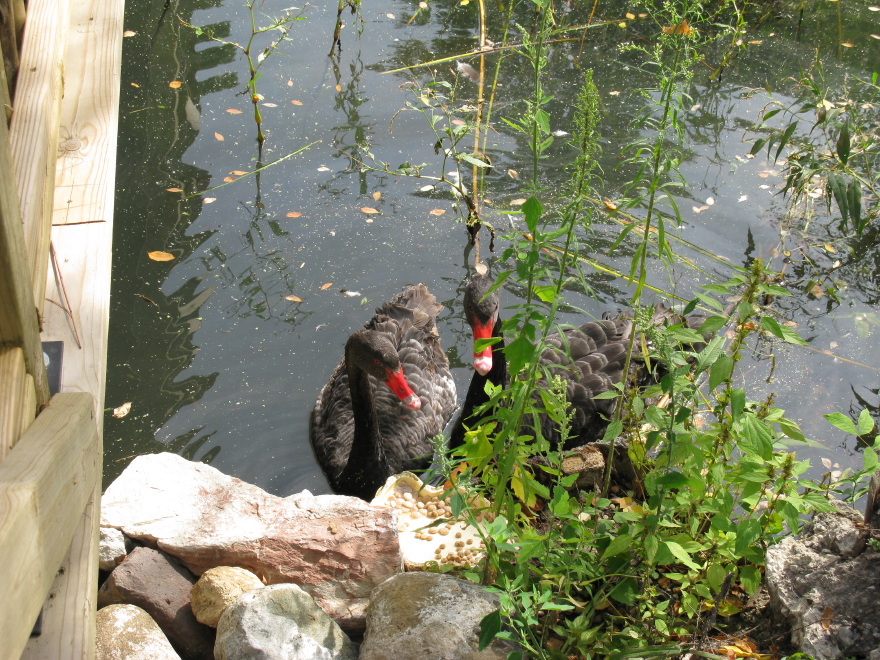Austalian Black Swans at the Racine Zoo

35racinezoo.jpg
Australian Black Swans at the Racine Zoo in Racine, Wisconsin.
The Black Swan, Cygnus atratus is a large non-migratory waterbird which breeds mainly in the southeast and southwest of Australia. It is also found along the east coast of Australia, Tasmaniaand recently reintroduced in New Zealand. Prior to the arrival of the Māori a sub-species, the New Zealand Swan used to live in New Zealand. This subspecies was hunted to extinction. The Black Swan was formerly placed into a monotypic genus, Chenopis.
The Black Swan is commonly found in the wetlands of southern Australia. Unfortunately, human inhabitance has decreased the population of the swan. The current global population of the Black Swan is approximately around 500,000 individuals.
Black Swans were discovered by the expedition of Willem de Vlamingh to the west coast of Australiain 1697. Their discovery created great interest in Europe, where "all swans are white" had long been used as a standard example of a well-known scientific truth.
The Black Swan is 52in (130cm) long and weighs up to 20lbs (9kg). It has all black plumage, except for the red bill, dark grey legs and white tips of the wing feathers. The neck is long and curved in an "S". On its red bill, there is a white bar near the tip.
Both sexes are similar, with female slightly smaller and lighter than male.
The cygnets (chicks) have light grey plumage.
The Southern Hemisphere swan species differ from the all-white Northern Hemisphere swans in that they all have some black in the plumage, but only the Black Swan is almost completely black. However, its closest living relative is probably the Mute Swan which is most similar, except in body plumage.
Every year, the adults moult and become flightless. During this time they gather on open lakes in flocks. The diet consists mainly of water plants and unlike many other waterbirds, they spend their entire lives in the area where they were hatched. (Source: http://www.avianweb.com/blackswans.html)
Previous Page | Racine Index | All Photos
| Next Page